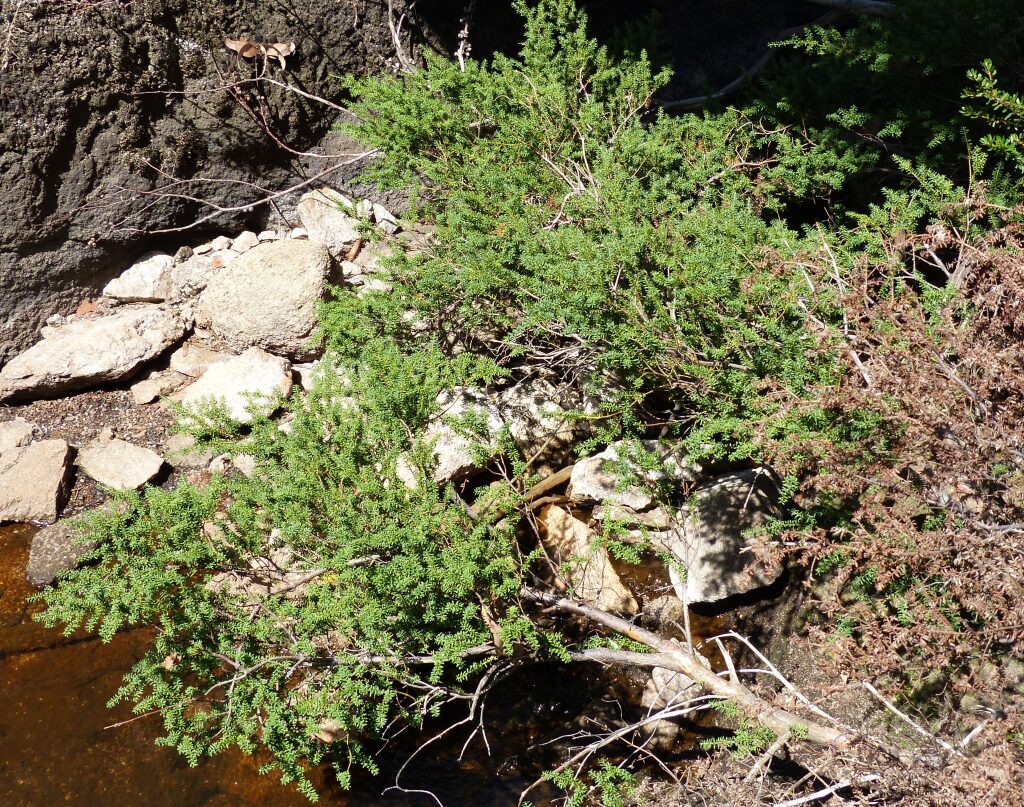Podocarpus lawrencei
Hook.f. Mountain Plum-pineProstrate or erect shrub, often decumbent and sprawling over rocks, occasionally a tree up to 8 m high or rarely more. Bark smooth, pale coppery-brown and inclined to peel in papery sheets. Leaves sessile, oblong-linear, 0.5–1.5 cm long, 1.5–2.5 mm wide, rigid, leathery, dark green, aromatic, midrib prominent on under-surface; apex obtuse to apiculate, sometimes minutely toothed. Male cones 7–15 mm long, purplish before release of pollen. Female cones on short stalks in leaf axils; scales few, fleshy, united with stalk to form receptacle; ovules 1–2; receptacle finally 4–8 mm long, succulent, bright-red. Seed ovoid, crested, 3–6 mm long.
EGU, HSF, HNF, MonT, HFE, VAlp. Grows in alpine and subalpine areas of southeastern Australia, on rocky sites above 1300 m.
An erect shrub to tree form of P. lawrencei is known from Goonmirk Rocks in East Gippsland, where it grows in cool-temperate rainforest with emergent eucalypts. Compared with the more common low prostrate form, the leaf apices are apiculate rather than obtuse and the apical margins rounded rather than angular. The aroma is said to be stronger and more pinelike. The largest specimen recorded (from a very sheltered position) is 20 m tall.
Entwisle, T.J. (1994). Conifers (Pinophyta). In: Walsh, N.G.; Entwisle, T.J., Flora of Victoria Vol. 2, Ferns and Allied Plants, Conifers and Monocotyledons, pp. 113–121. Inkata Press, Melbourne.
 Spinning
Spinning

